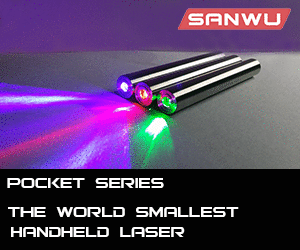While this is an exageration Zeebit is correct. The flaw is in the OP's assumption that in many years, single-use batteries will be abundant and rechargeables will not be nearly as common. However, i am almost positive it will be the opposite.
:beer:
-Matt
My assumption was a bit different than what you stated:
I like the idea of using standard off the shelf batteries for a laser, because I know that 10 or 20 years from now, I'll be able to find replacement batteries. I'm not so sure about the rechargeable batteries that have odd part numbers.
The standard AAA, AA, C, D, and 9V Batteries have been around for decades and are used everywhere in so many products. These can be single use OR rechargeable
Rechargeable batteries will still be around in 10 - 20 years, but because the technology is subject to change, the odd part number battery we see today may not exist in 10 to 20 years. The improved replacements may be a different size and or diameter. There's no law or standards organization forcing any company to maintain a given battery configuration for the future and as improved batteries come out, manufactures will change the product to fit the newer technology.
Over the years I've seen products from the 60s, 70s, 80s, and 90s that are useless now because the battery that it used is no longer being made.
Different Issue, Battery Voltage:
The NiMH (nickel– metal hydride) AAA battery is about 1.2 volts compared to the 1.5 volts of the AAA Alkaline battery. I can only estimate the difference, but my best guess (calculation) is the a 150mW laser would be around 100mW with NiHM batteries. The NI-CAD AAA battery is also 1.2 volts.
Even if Alkaline batteries were outlawed in the future, the laser would still work, but would it would be at a lower power level.
I do have access to all sorts of electronics test equipment at the College where I work, so I'll test both NiMH and Alkaline under a load of 500mA to see what happens.
Thanks,
Bob Diaz



